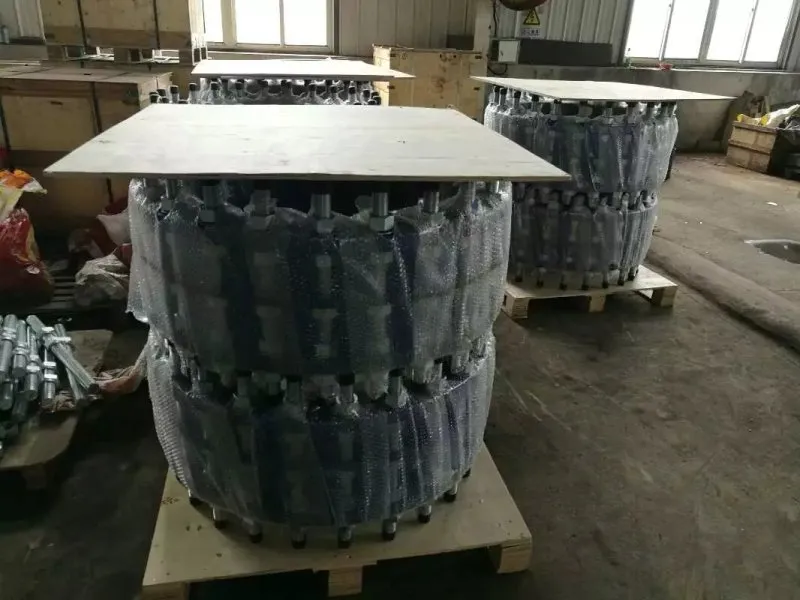air valve in pipeline
The Role of Air Valves in Pipeline Systems
Air valves are critical components in pipeline systems, playing a vital role in maintaining the operational efficiency and safety of various fluid transport applications. They are designed to manage the air that enters and exits water or sewage pipelines, thereby preventing potential issues caused by trapped air. This article will delve into the functions, types, applications, and importance of air valves in pipeline systems.
Functions of Air Valves
The primary functions of air valves in pipelines include air release, air intake, and vacuum relief. When liquids are transported through a pipeline, especially over long distances or varied terrains, air can become trapped within the system. This trapped air can lead to several problems, including reduced flow capacity, water hammer, and even pipeline failure.
1. Air Release Air valves help to release accumulated air from the pipeline. When water is displaced, air pockets can form, leading to insufficient fluid delivery and potential pressure surges, which can be damaging. By allowing entrapped air to escape, air valves ensure a smooth flow of water and minimize the risk of cavitation.
2. Air Intake During the draining of a pipeline or when there is a sudden change in pressure, a vacuum can develop. Air valves allow ambient air to enter the pipeline, thus equalizing the pressure and preventing pipeline collapse or damage. This function is crucial in maintaining the structural integrity of the system.
3. Vacuum Relief In cases where liquid is rapidly removed from the pipeline, air valves serve to prevent a vacuum condition that could lead to implosion or damage to pipeline fittings. By relieving vacuum through controlled air intake, these valves contribute to the longevity and reliability of the system.
Types of Air Valves
Air valves can be categorized into three main types air release valves, air intake valves, and combination valves.
air valve in pipeline

1. Air Release Valves These valves are specifically designed to release small amounts of air continuously or intermittently from a pipeline as the fluid flows. They usually incorporate a float mechanism that allows them to open and close automatically based on the air pressure in the system.
2. Air Intake Valves Primarily meant for allowing air to enter the pipeline to equalize pressure, these valves open during a vacuum condition. They usually have a larger orifice than air release valves to accommodate the rapid influx of air during specific situations.
3. Combination Valves As the name suggests, combination valves incorporate both air release and air intake functionalities. This type is particularly useful in complex pipeline systems where both features are required for optimal operation.
Applications of Air Valves
Air valves are found in various industries, including water supply, sewage management, irrigation systems, and industrial processes. The water supply sector relies heavily on these valves to ensure efficient distribution, while sewage systems use them to mitigate problems related to air pockets and prevent unpleasant odors. In irrigation, air valves help to maintain consistent pressure, improving water delivery to crops.
Furthermore, air valves are also critical in many industrial processes where fluids are transported in pipelines under varying pressures. For instance, in petrochemical and food processing industries, the absence of proper air management can lead to operational disruptions and product contamination.
Importance of Air Valves in Ensuring Pipeline Safety and Efficiency
The role of air valves cannot be overstated when it comes to maintaining the safety and efficiency of pipeline systems. Their ability to manage air in the system helps to prevent costly repairs, system downtimes, and environmental hazards associated with ruptured pipelines. Regular maintenance and proper installation of air valves are essential to ensure that they function effectively.
In summary, air valves are indispensable components of pipeline systems. They play a crucial role in preventing air-related issues, enabling safe and efficient fluid transport. Understanding their functions, types, and applications is vital for anyone involved in the design, operation, or maintenance of pipeline systems. As industries continue to evolve and expand, the significance of air valves in enhancing the reliability and safety of pipelines will undoubtedly increase, making them an essential focus for future pipeline management and innovation.
-
The Smarter Choice for Pedestrian AreasNewsJun.30,2025
-
The Gold Standard in Round Drain CoversNewsJun.30,2025
-
The Gold Standard in Manhole Cover SystemsNewsJun.30,2025
-
Superior Drainage Solutions with Premium Gully GratesNewsJun.30,2025
-
Superior Drainage Solutions for Global InfrastructureNewsJun.30,2025
-
Square Manhole Solutions for Modern InfrastructureNewsJun.30,2025
-
Premium Manhole Covers for Modern InfrastructureNewsJun.30,2025
